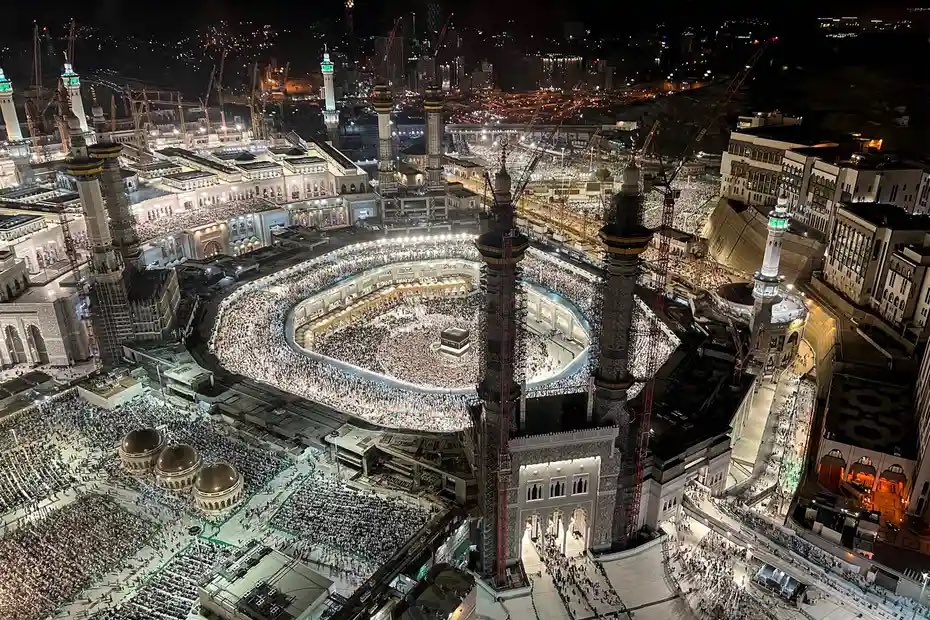Religious gatherings are some of the most awe-inspiring events that bring millions of people together in shared faith. From the banks of the Ganges to the holy sites of Mecca, these gatherings not only hold deep spiritual significance but also showcase the power of collective devotion. Here’s a look at some of the biggest religious gatherings around the world.
1. Maha Kumbh Mela, India
The Maha Kumbh Mela is one of the largest and most significant religious gatherings in the world. Held once every 12 years at four rotating locations in India—Allahabad (Prayagraj), Haridwar, Ujjain, and Nashik—it attracts millions of pilgrims, ascetics, and tourists who come to bathe in the sacred rivers (primarily the Ganges, Yamuna, and Godavari) to cleanse themselves of sins and seek spiritual blessings.

The Kumbh Mela’s origins date back to ancient Hindu mythology, where it is believed that during a cosmic battle, a pitcher (Kumbh) of nectar (Amrit) was spilled at these locations, making them sacred. The festival is marked by rituals, prayers, processions, and spiritual discourses, and it plays a central role in Hindu culture and spirituality.
The Maha Kumbh Mela specifically refers to the most auspicious of these gatherings, held in Prayagraj, and draws the largest crowds—sometimes exceeding 100 million participants over the course of the event. The last Maha Kumbh Mela was held in 2013, and the next one will be in 2025. The event is not only a religious occasion but also a cultural and social phenomenon, showcasing India’s deep spiritual traditions and its diverse populace.
2. Pope Francis’ Mass in Manila, Philippines
In January 2015, Pope Francis held a Mass in Manila, Philippines, which drew a crowd of over 6 million people, making it one of the largest gatherings in the world. This event was significant as it marked the Pope’s final Mass during his trip to the country. The venue, Rizal Park, is a sprawling 143-acre site in the heart of Manila, which was packed with pilgrims who traveled from various parts of the Philippines and beyond.

However, this wasn’t the first time a pope had drawn a crowd of such magnitude in the Philippines. In 1995, Pope John Paul II celebrated Mass in the same park, attracting between 2 million and 5 million people. The density of the crowd was so overwhelming that Pope John Paul II was flown by helicopter instead of traveling by car to avoid the chaos. Despite the expected turnout of 6 million in 2015, Rizal Park’s capacity meant that each person would have to stand shoulder-to-shoulder, making the event both a testament to the devotion of the Catholic faithful and the power of the papacy.
3. Hajj, Saudi Arabia
Hajj, the annual Islamic pilgrimage to Mecca, draws millions of Muslims from all corners of the globe. It is one of the Five Pillars of Islam, and every able-bodied Muslim is required to undertake this pilgrimage at least once in their lifetime, provided they are financially and physically able to do so. The pilgrimage takes place in the 12th month of the Islamic lunar calendar and lasts for several days, with Muslims performing rituals such as walking around the Kaaba, praying at the mosque of Mina, and commemorating the sacrifice of Prophet Ibrahim.

Each year, between 3 million and 5 million pilgrims converge in the holy city of Mecca for this sacred journey. The Hajj rituals stretch over about 15 kilometers, with pilgrims traveling from one holy site to another, often in intense heat and large crowds. To ensure the safety and efficiency of this massive influx, Saudi Arabia has invested heavily in infrastructure, with newly constructed ramps, improved crowd control systems, and measures to manage the flow of people. The Hajj remains one of the most spectacular and spiritually significant gatherings in the world.
4. Ashoura Procession, Karbala, Iraq
The Ashoura procession is a deeply emotional event observed by Shia Muslims to commemorate the martyrdom of Imam Hussein, the grandson of Prophet Muhammad, at the Battle of Karbala in 680 CE. Every year, up to 3 million Shia pilgrims journey to Karbala, a city in southern Iraq, to pay their respects at the shrine of Imam Hussein. This procession is marked by profound displays of mourning, with many pilgrims engaging in rituals such as self-flagellation, whipping their bodies with chains, or walking barefoot for long distances.
The Ashoura observances are particularly significant for Shia Muslims, who mourn the tragic events of Karbala as a symbol of resistance against injustice. Despite the often harsh conditions, including intense heat and crowded spaces, the Ashoura pilgrimage remains a powerful demonstration of devotion and solidarity among Shia Muslims.
5. Other Notable Religious Gatherings
While the Maha Kumbh Mela, Hajj, and Ashoura are some of the most well-known and largest religious gatherings, other events also draw massive crowds each year. For example, the Holi Festival in India, which celebrates the arrival of spring and the triumph of good over evil, attracts millions of people who gather to throw colorful powders and celebrate together. Similarly, in Vatican City, crowds gather during major Christian holidays such as Christmas and Easter to participate in the celebrations led by the Pope.
Across the globe, religious gatherings reflect the deep faith and devotion of millions of people. These events not only provide an opportunity for spiritual renewal but also serve as a reminder of the profound connection between humanity and the divine.
Whether it is the grand spectacle of the Maha Kumbh Mela or the quiet, somber processions of Ashoura, religious gatherings around the world continue to be some of the most significant and awe-inspiring events, both in terms of the scale of human participation and the intensity of shared belief.



